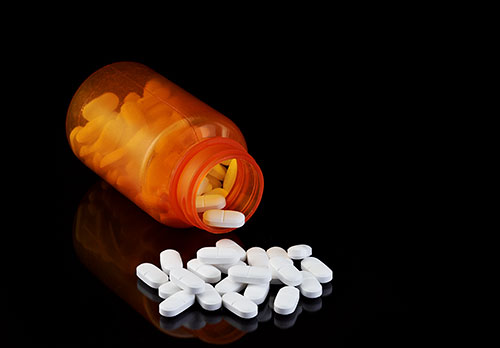With rising rates of opioid abuse across the country, there remains an unfortunate lack of education about the signs of opioid misuse and risk for overdose. In 2015, an estimated 2 million people in the United States struggled with abuse of prescription painkillers, while another 591,000 suffered from a heroin use disorder. Collectively, these opioid use disorder creates a substantial public health burden as well as an enormous psychological burden for families. Learn to recognize the signs of an opioid use disorder to protect your loved ones by helping them get the professional opioid abuse treatment they need.
What is an Opioid Use Disorder?
Opioid use disorder is the official term that medical professionals use to describe a person experiencing difficulty with opioid abuse. To meet the formal criteria for opioid use disorder, you must have a problematic pattern of opioid use that causes significant distress or disruption to your life. This might include the use of prescription painkillers, heroin, or both substances. For example, many people start by misusing prescription opioid analgesics before turning to heroin because of its easy availability and lower cost.
When talking about opioid use disorder, it is essential to distinguish between physiological dependence and addiction. Physiological dependence refers to the body’s tendency to become accustomed to the presence of opioids and adjust itself accordingly. For example, you might develop a higher tolerance for opioids, requiring more of the drug or more frequent doses to get the same effect you used to. You may also develop withdrawal symptoms, in which the body has an adverse reaction to going without the drug. Withdrawal symptoms may include nausea, vomiting, diarrhea, runny nose, and chills. These withdrawal symptoms are signs that your body now depends on the presence of opioids to function correctly.
Physiological signs of dependence, including tolerance and withdrawal, occur when anyone uses opioids over an extended period. For example, chronic pain patients often find that their usual dose eventually becomes less efficient than it used to be initially. Addiction, on the other hand, refers to a pattern of behaviors marked by intense cravings for the drug. Addiction encompasses a behavioral, psychological, and emotional response, while opioid dependence refers to the body’s physiological response to opioids. Treating both aspects of problematic opioid use is the best way to achieve a long-lasting recovery.
For over 26 years, people from all over the world have chosen Waismann Method as their opioid detox provider.
We know the challenges you face and the importance of creating a unique and personal experience for you right from the start.Call for Detox Options 1-800-423-2482
Signs of Opioid Abuse
Because our society stigmatizes addiction, many people struggling with their opioid use hide that fact from their friends and family members. Some individuals even conceal their opioid problem from themselves, coming up with elaborate rationalizations for their increasing need to take pills. Check the following signs of opioid abuse to see if they seem familiar:
Physiological Signs of Opioid Use Disorder and Abuse
As reviewed above, opioid abuse results in signs of physiological dependence on the drug. These signs may include tolerance or withdrawal symptoms. Some common physiological symptoms include:
- Sleepiness or appearing sedated
- Intense cravings for the drug
- Smaller pupils
- Increased sensitivity to pain
- Slowed breathing rate
- Nausea
- Vomiting
- Itching
- Sleep disturbance, including insomnia
- Rashes or flushed skin
- Slurred speech
- Constipation or other gastrointestinal difficulties
- Unpleasant symptoms that go away when you take the drug
Psychological and Behavioral Signs of Opioid Abuse
Opioid use disorder also results in a variety of mental and behavioral symptoms. Many of these may seem familiar to the loved ones of individuals struggling with opioid abuse:
- Euphoria
- Anxiety or depression
- Confusion
- Difficulty making decisions.
- Poor judgment
- Difficulty planning or sticking to a plan.
- Concentration difficulties.
- Memory problems
- Trying to cut back on opioids but being unable to do so.
- Spending a lot of time obtaining, using, or recovering from the effects of opioids.
- They are failing to meet primary responsibilities at work or home.
- The interpersonal conflict caused by drug use
- Avoiding situations that used to be important, such as social or recreational activities.
- Needing to refill prescriptions early because pills are “missing” or “lost.”
What Are the Risks?
The rise in opioid use disorder concerns many public health experts because the risks of continued opioid use are high. Opioids modulate the brain’s reward circuitry, which leads to a pattern of mood and anxiety problems that can further fuel the drug problem. Using opioids also affects judgment, leading many people to make poor decisions, such as driving while under the influence of drugs. Additionally, opioids have high medical risks. Particularly for people with chronic medical conditions, opioids may exacerbate heart, liver, and kidney problems.
Of course, the most significant risk of opioid use disorder is an overdose. More than 115 Americans die every day because of an opioid-related overdose.
Opioid Overdose
Using opioids results in slowed breathing and a euphoric feeling. An overdose occurs when slowed breathing prevents the brain from getting enough oxygen, causing brain damage. Taking too much of the drug can cause breathing to stop entirely. The risks of opioid overdose are particularly high if opioids are mixed with another sedative, such as alcohol or benzodiazepines.
If you see a loved one experiencing significant confusion, pinprick pupils, intermittently losing consciousness, no longer breathing, or turning blue, these are signs of an opioid overdose. Contact 911 immediately to get the person medical attention. Administering an opioid antagonist drug could reverse the overdose, saving the person’s life and allowing him or her to seek treatment. Unlike most people think, opiate treatment can be easy and efficient when managed by capable and responsible physicians. There is no reason to risk your life due to fear; get treatment now, and medically reverse your opioid use disorder.
Source
https://www.drugabuse.gov/drugs-abuse/opioids/opioid-overdose-crisis
Reviewed by Clare Waismann, CATC, Founder of Waismann Method® Advanced Treatment for Opiate Dependence
All topics for the RapidDetox.com blog are selected and written based on high standards of editorial quality and cited sources. Articles are reviewed by Clare Waismann, CATC, and founder of Waismann Method®, for accuracy, credibility, and relevancy to the audience. Clare Waismann as an authority and expert on opioid dependence, detoxification treatments, and related topics covered on the RapidDetox.com blog. Some articles are additionally reviewed by one of Waismann Method®’s specialists, depending on their field of expertise. For additional information and disclaimers regarding third-party sources and content for informational purposes only, please see our Terms of Service.






